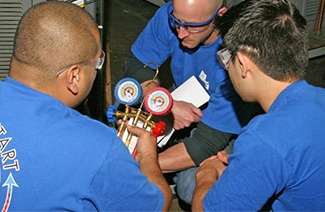在进行2017年5月13日小范围预测。
类别:社会类 真题 140816CN-P1
Title:Hunting and the Setting of Inner Eurasia
Inner Eurasia refers to the large continental area extending from Russia in the west to the Pacific Ocean, and to the north of Iran, India, and most of China. The first systematic colonization of parts of Inner Eurasia occurred about 80,000 to 90,000 years ago, which is relatively late in human history compared with Africa, Europe, and southern Asia. Why was it difficult to settle? The long, cold, arid winters of this region’s steppes (grass covered plains) poised two distinctive problems for human settlers. The first was hot to keep warm. Humans may have used fire even a million years ago. Presumably their ability to scavenge animal carcasses meant that they could use skins or furs for warmth. However, there are no signs of hearths before about 200,000 years
ago.
This suggests that humans used fire opportunistically and had not yet domesticated it enough to survive the harsh winters of Ice Age InnerEurasia. The second, even trickier problem was getting food during the long winters. It was not that Inner Eurasia lacked sources of food. The problem was that the food was of the wrong kind, and it was not always available. Humans could not exploit the abundant grasses of the steppes, and most of the edible plants died off in winter. So, for long periods of each year, it was necessary to rely mainly on meat. However, hunting is a more difficult, dangerous, and unreliable way of life than gathering. Animals, unlike plants, can evade predators and may even fight back. Hunters must also cover more ground than gatherers. Setting Inner Eurasia meant overcoming these difficulties. Systematic and reliable hunting methods meant more than the development of new technologies, they also demanded new social structures. According to the formulation of archaeologist Lewis Binford, in a typical hunter/collector foodgathering strategy parties of hunters leave camps with very specific goals in mind, based on intimate knowledge of their intended prey. They may by away for days or weeks at a time and will often store their kill at specific storage sites, from which they will bring food back to a base camp when needed.
本文的内容是2017年5月13日托福阅读机经小范围预测。
As a result, they move their base campsless often than in forager societies, but they range more widely, their movements are more carefully planned, and so are their methods ofstorage.
Thus, hunters have to plan in advance and in great detail. They need reliable information about the movements and habits of animal prey over large areas, which can be secured only by maintaining regular contacts with neighboring groups. Finally, they need reliable methods of storage because, where plant foods cannot provide a dietary safety net, planning has to be precise and detailed to ensure that there is enough to tide them over in periods of shortage. Such planning appears in the choice of hunting gear, in the selection of routes and prey, in the choice of companions and timing, in the maintenance of communications with neighbors, and in the methods of storage.
Failure at any point can be fatal for the entire group. Hunting strategies also imply greater social complexity. The regular exchange of information and
sometimes of material goods is critical not only within groups, but also between groups scattered over large distances. This increases the importance of symbolic exchanges of both goods and information, and makes it necessary to clarify group identity. Internally, groups may split for long periods as hunting parties travel over great distances. All in all, each group has to exist and survive in several distinct configurations.
For these reasons, archaeologist Clive Gamble has argued that the difficulties of setting the Eurasian heartland arose less from the technological than from the social and organizational features of human communities before 120,000 years ago. There is little or no archaeological evidence that these communities engaged in such practices as detailed planning or widespread contacts. Nor is there any physical evidence for storage, raw materials all come from within a radius of 50 kilometers— and usually less than 5 kilometers—of the sites where they were used.
Paragraph 2
The long, cold, arid winters of this region’s steppes (grass covered plains) poised two distinctive problems for human settlers. The first was hot to keep warm. Humans may have used fire even a million years ago. Presumably their ability to scavenge animal carcasses meant that they could use skins or furs for warmth. However, there are no signs of hearths before about 200,000 years
ago. This suggests that humans used fire opportunistically and had not yet domesticated it enough to survive the harsh winters of Ice Age Inner Eurasia.
以上的内容就是2017年5月13日托福阅读机经小范围预测,希望可以正在备考的同学们提供更多帮助。

















